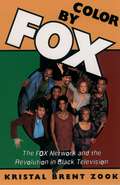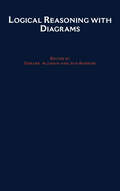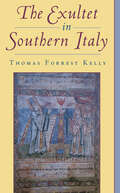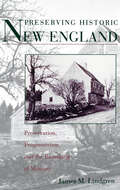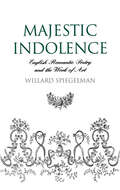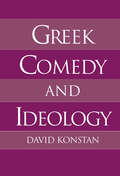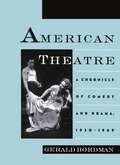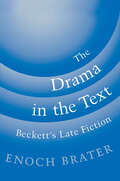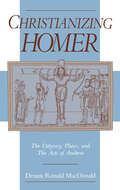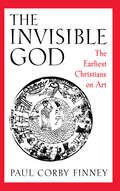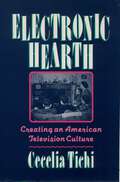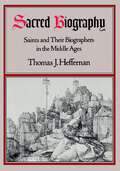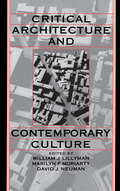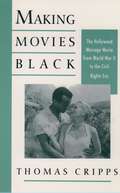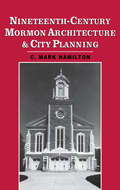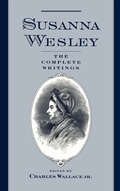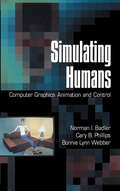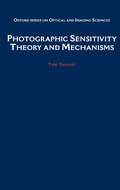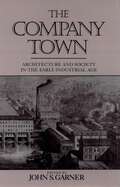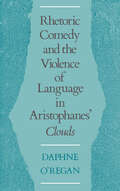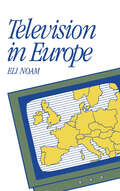- Table View
- List View
Color By Fox: The Fox Network And The Revolution In Black Television
by Kristal Brent ZookFollowing the overwhelming success of "The Cosby Show" in the 1980s, an unprecedented shift took place in television history: white executives turned to black dollars as a way of salvaging network profits lost in the war against video cassettes and cable T.V. Not only were African-American viewers watching disproportionately more network television than the general population but, as Nielsen finally realized, they preferred black shows. As a result, African-American producers, writers, directors, and stars were given an unusual degree of creative control over shows such as "The Fresh Prince of Bel Air," "Roc," "Living Single," and "New York Undercover". What emerged were radical representations of African-American memory and experience. Offering a fascinating examination of the explosion of black television programming in the 1980s and 1990s, this book provides, for the first time ever, an interpretation of black TV based in both journalism and critical theory. Locating a persistent black nationalist desire--a yearning for home and community--in the shows produced by and for African-Americans in this period, Kristal Brent Zook shows how the Fox hip-hop sitcom both reinforced and rebelled against earlier black sitcoms from the sixties and seventies. Incorporating interviews with such prominent executives, producers, and stars as Keenen Ivory Wayans, Sinbad, Quincy Jones, Robert Townsend, Charles Dutton, Yvette Lee Bowser, and Ralph Farquhar, this study looks at both production and reception among African-American viewers, providing nuanced readings of the shows themselves as well as the sociopolitical contexts in which they emerged. While black TV during this period may seem trivial or buffoonish to some, Color by Fox reveals its deep-rooted ties to African-American protest literature and autobiography, and a desire for social transformation.
Color by Fox: The Fox Network and the Revolution in Black Television (W.E.B. Du Bois Institute)
by Kristal Brent ZookFollowing the overwhelming success of "The Cosby Show" in the 1980s, an unprecedented shift took place in television history: white executives turned to black dollars as a way of salvaging network profits lost in the war against video cassettes and cable T.V. Not only were African-American viewers watching disproportionately more network television than the general population but, as Nielsen finally realized, they preferred black shows. As a result, African-American producers, writers, directors, and stars were given an unusual degree of creative control over shows such as "The Fresh Prince of Bel Air," "Roc," "Living Single," and "New York Undercover". What emerged were radical representations of African-American memory and experience. Offering a fascinating examination of the explosion of black television programming in the 1980s and 1990s, this book provides, for the first time ever, an interpretation of black TV based in both journalism and critical theory. Locating a persistent black nationalist desire--a yearning for home and community--in the shows produced by and for African-Americans in this period, Kristal Brent Zook shows how the Fox hip-hop sitcom both reinforced and rebelled against earlier black sitcoms from the sixties and seventies. Incorporating interviews with such prominent executives, producers, and stars as Keenen Ivory Wayans, Sinbad, Quincy Jones, Robert Townsend, Charles Dutton, Yvette Lee Bowser, and Ralph Farquhar, this study looks at both production and reception among African-American viewers, providing nuanced readings of the shows themselves as well as the sociopolitical contexts in which they emerged. While black TV during this period may seem trivial or buffoonish to some, Color by Fox reveals its deep-rooted ties to African-American protest literature and autobiography, and a desire for social transformation.
Logical Reasoning with Diagrams (Studies in Logic and Computation)
by Gerard Allwein Jon BarwiseOne effect of information technology is the increasing need to present information visually. The trend raises intriguing questions. What is the logical status of reasoning that employs visualization? What are the cognitive advantages and pitfalls of this reasoning? What kinds of tools can be developed to aid in the use of visual representation? This newest volume on the Studies in Logic and Computation series addresses the logical aspects of the visualization of information. The authors of these specially commissioned papers explore the properties of diagrams, charts, and maps, and their use in problem solving and teaching basic reasoning skills. As computers make visual representations more commonplace, it is important for professionals, researchers and students in computer science, philosophy, and logic to develop an understanding of these tools; this book can clarify the relationship between visuals and information.
The Exultet in Southern Italy
by Thomas Forrest KellyThe Exultet rolls of southern Italy are parchment scrolls containing text and music for the blessing of the great Easter candle; they contain magnificent illustrations, often turned upside down with respect to the text, The Exultet in Southern Italy provides a broad perspective on this phenomenon that has long attracted the interest of those interested in medieval art, liturgy, and music. This book considers these documents in the cultural and liturgical context in which they were made, and provides a perspective on all aspects of this particularly southern Italian practice. While previous studies have concentrated on the illustrations in these rolls, Kelly's book also looks at the particular place of the Exultet in changing ceremonial practices, provides background on the texts and music used in southern Italy, and inquires into the manufacture and purpose of the Exultets--why they were made, who owned them, and how they were used.
Preserving Historic New England: Preservation, Progressivism, and the Remaking of Memory
by James M. LindgrenBy the first years of the twentieth century the memory of old-time New England was in danger. What had once been a land of small towns populated by tradition-minded Yankees was now becoming almost unrecognizable with a floodtide of immigrants and the constant change of a modernizing society. At the same time, cities such as Boston, Portsmouth, and Salem were bursting at the seams with factories, high-rises, and uncontrollable growth. During a period when the Colonial Revival and progressive movements held sway, Yankees asserted their influence through campaigns to redefine the meaning of their Anglo-American forebears. As part of the reaction, the modern preservation movement was founded by William Sumner Appleton, Jr., a privileged, old-blooded Bostonian. Resisting not simply this avalanche of change but the amateurish romanticism of fellow antiquaries, Appleton founded the Society for the Preservation of New England Antiquities in 1910. While examining SPNEA in the context of progressivism, Preserving Historic New England focuses on its redefinition of preservation to fit the methodology of science, the economy of capitalism, and the aestheticism of architecture. In so doing, preservation not only became a profession defined by those male worlds, but remade Yankee memory to accord with the modern corporate order.
American Theatre: A Chronicle of Comedy and Drama, 1930-1969
by Gerald BordmanThis book concludes Gerald Bordman's acclaimed survey of American non-musical theatre. It deals with the years 1930 to 1970, a period when the number of yearly new plays was shrinking, but a period during which American drama as a whole entered the world stage and became a dominant force. With works like Eugene O'Neill's Long Day's Journey Into Night, Tennessee William's A Streetcar Named Desire, and Arthur Miller's Death of a Salesman, American theater finally reached adulthood both dramatically and psychologically. Bordman's lively, authoritative study covers every Broadway production, as well as every major off-Broadway show. His discussion moves season by season and show by show in chronological order; he offers plot synopses and details the physical production, directors, players, theaters, and newspaper reviews. This book and the preceding volumes of American Theatre stand as the premier history of American drama.
The Drama In The Text: Beckett's Late Fiction
by Enoch BraterThe Drama in the Textargues that Beckett's late fiction, like his radio plays, demands to be read aloud, since much of the emotional meaning lodges in its tonality. In Beckett's haunting prose work the reader turns listener, collaborating with the sound of words to elucidate meaning from the silence of the universe. Enoch Brater ranges across all of Beckett's work, quoting from it liberally, and makes connections mainly with other writers, but also with details drawn from the entire Western cultural heritage. Brater serves as an authoritative and persuasive guide to the rich texture of such a difficult but compelling vocabulary, providing recognition, insight, and accessibility.
Christianizing Homer: The Odyssey, Plato, and the Acts of Andrew
by Dennis R. MacDonaldThis study focuses on the apocryphal Acts of Andrew (c. 200 CE), which purports to tell the story of the travels, miracles, and martyrdom of the apostle Andrew. Traditional scholarship has looked for the background of such writings in Jewish and Christian scriptures. MacDonald, however, breaks with that model and looks to classic literature for the sources of this story. Specifically, he argues that the Acts represent an attempt to transform Greco-Roman myth into Christian narrative categories by telling the story of Andrew in terms of Homeric epic, in particular the Odyssey. MacDonald presents a point-by-point comparison of the two works, finding the resemblances so strong, numerous, and tendentious that they virtually compel the reader to consider the Acts a transformative "rewriting" of the epic. This discovery not only sheds valuable light on the uses of Homer in the early church but also significantly contributes to our understanding of the reception of Homer in the empire as a whole.
The Invisible God: The Earliest Christians On Art
by Paul Corby FinneyThis revisionist study challenges the received opinion that in its earliest manifestations Christianity was a form of religiosity opposed both on principle and in fact to the use of pictures. Paul Corby Finney argues that the well-known absence of Christian pictures before A.D. 200 is due to a complex interplay of social, economic, and political factors, and is not, as is commonly assumed, a result of an anti-image ideology. The book documents the origins of Christian art based on some of the oldest surviving Christian archaeological evidence, and it seeks to show how the Christian products conformed to the already-existing pagan types and models. This study will interest scholars and students in the fields of church history, ancient history, archaeology, art history, classics, and historical theology.
The Invisible God: The Earliest Christians on Art
by Paul Corby FinneyThis revisionist study challenges the received opinion that in its earliest manifestations Christianity was a form of religiosity opposed both on principle and in fact to the use of pictures. Paul Corby Finney argues that the well-known absence of Christian pictures before A.D. 200 is due to a complex interplay of social, economic, and political factors, and is not, as is commonly assumed, a result of an anti-image ideology. The book documents the origins of Christian art based on some of the oldest surviving Christian archaeological evidence, and it seeks to show how the Christian products conformed to the already-existing pagan types and models. This study will interest scholars and students in the fields of church history, ancient history, archaeology, art history, classics, and historical theology.
Electronic Hearth: Creating an American Television Culture
by Cecelia TichiWe all talk about the "tube" or "box," as if television were simply another appliance like the refrigerator or toaster oven. But Cecilia Tichi argues that TV is actually an environment--a pervasive screen-world that saturates almost every aspect of modern life. In Electronic Hearth, she looks at how that environment evolved, and how it, in turn, has shaped the American experience. Tichi explores almost fifty years of writing about television--in novels, cartoons, journalism, advertising, and critical books and articles--to define the role of television in the American consciousness. She examines early TV advertising to show how the industry tried to position the new device as not just a gadget but a prestigious new piece of furniture, a highly prized addition to the home. The television set, she writes, has emerged as a new electronic hearth--the center of family activity. John Updike described this "primitive appeal of the hearth" in Roger's Version: "Television is--its irresistible charm--a fire. Entering an empty room, we turn it on, and a talking face flares into being." Sitting in front of the TV, Americans exist in a safety zone, free from the hostility and violence of the outside world. She also discusses long-standing suspicions of TV viewing: its often solitary, almost autoerotic character, its supposed numbing of the minds and imagination of children, and assertions that watching television drugs the minds of Americans. Television has been seen as treacherous territory for public figures, from generals to presidents, where satire and broadcast journalism often deflate their authority. And the print culture of journalism and book publishing has waged a decades-long war of survival against it--only to see new TV generations embrace both the box and the book as a part of their cultural world. In today's culture, she writes, we have become "teleconscious"--seeing, for example, real life being certified through television ("as seen on TV"), and television constantly ratified through its universal presence in art, movies, music, comic strips, fabric prints, and even references to TV on TV. Ranging far beyond the bounds of the broadcast industry, Tichi provides a history of contemporary American culture, a culture defined by the television environment. Intensively researched and insightfully written, The Electronic Hearth offers a new understanding of a critical, but much-maligned, aspect of modern life.
Sacred Biography: Saints and Their Biographers in the Middle Ages
by Thomas J. HeffernanThough medieval "saints' lives" are among the oldest literary texts of Western vernacular culture, they are routinely patronized as "pious fiction" by modern historiography. This book demonstrates that to characterize the genre as fiction is to misunderstand the intentions of medieval authors, who were neither credulous fools nor men blinded by piety. Concentrating on English texts, Heffernan reconstructs the medieval perspective and considers sacred biography in relation to the community for which it was written; identifies the genre's rhetorical practices and purposes; and demonstrates the syncretistic way in which the life of the medieval saint was transformed from oral tales to sacred text. In the process, Heffernan not only achieves a more contextually accurate understanding of the medieval saints' lives, but details a new critical method that has important implications for the practice of textual criticism.
Critical Architecture And Contemporary Culture
by William J. Lillyman Marilyn F. Moriarty David J. NeumanCritical Architecture and Contemporary Culture (University of California Humanities Research Institute Series)
by William J. Lillyman Marilyn F. Moriarty David J. NeumanThe third volume in the University of California Humanities Research Institute Series, this book brings together prominent literary theorists and architects to offer a variety of perspectives on the relation between postmodernism and architecture. The contributors include such luminaries from the forefront of literary studies as J. Hillis Miller, Jacques Derrida, and Jean-Francois Lyotard; the architects Peter Eisenman, Frank Gehry, and Robert Stern offer their perspectives on the critical role of architecture and contemporary culture. The high caliber of the discourse and the variety of approaches included will draw a scholarly audience from a wide range of disciplines.
Making Movies Black: The Hollywood Message Movie from World War II to the Civil Rights Era
by Thomas CrippsThis is the second volume of Thomas Cripps's definitive history of African-Americans in Hollywood. It covers the period from World War II through the civil rights movement of the 1960s, examining this period through the prism of popular culture. Making Movies Black shows how movies anticipated and helped form America's changing ideas about race. Cripps contends that from the liberal rhetoric of the war years--marked as it was by the propaganda catchwords brotherhood and tolerance--came movies that defined a new African-American presence both in film and in American society at large. He argues that the war years, more than any previous era, gave African-American activists access to centers of cultural influence and power in both Washington and Hollywood. Among the results were an expanded black imagery on the screen during the war--in combat movies such as Bataan, Crash Dive, and Sahara; musicals such as Stormy Weather and Cabin in the Sky; and government propaganda films such as The Negro Soldier and Wings for this Man (narrated by Ronald Reagan!). After the war, the ideologies of both black activism and integrationism persisted, resulting in the 'message movie' era of Pinky, Home of the Brave, and No Way Out, a form of racial politics that anticipated the goals of the Civil Rights Movement. Delving into previously inaccessible records of major Hollywood studios, among them Warner Bros., RKO, and 20th Century-Fox, as well as records of the Office of War Information in the National Archives, and records of the NAACP, and interviews with survivors of the era, Cripps reveals the struggle of both lesser known black filmmakers like Carlton Moss and major figures such as Sidney Poitier. More than a narrative history, Making Movies Black reaches beyond the screen itself with sixty photographs, many never before published, which illustrate the mood of the time. Revealing the social impact of the classical Hollywood film, Making Movies Black is the perfect book for those interested in the changing racial climate in post-World War II American life.
Nineteenth-Century Mormon Architecture and City Planning
by C. Mark HamiltonThis book is the first comprehensive study of Mormon architecture. It centers on the doctrine of Zion which led to over 500 planned settlements in Missouri, Illinois, Utah, Idaho, Wyoming, Colorado, New Mexico, Arizona, California, Nevada, Canada, and Mexico. This doctrine also led to a hierarchy of building types from temples and tabernacles to meetinghouses and tithing offices. Their built environment stands as a monument to a unique utopian society that not only survived but continues to flourish where others have become historical or cultural curiosities. Hamilton's account, augmented by 135 original and historical photographs, provides a fascinating example of how religious teachings and practices are expressed in planned communities and architecture types.
Susanna Wesley: The Complete Writings
by Susanna WesleySusanna Wesley, long celebrated in Methodist mythology as mother of the movement's founders, now takes place as a practical theologian in her own right. This collection of her letters, spiritual diary, and longer treatises (only one of which was published in her lifetime) shows her to be more than the nurturing mother of Wesleyan legend. It also reveals her to be a well-educated woman in conversation with contemporary theological, philosophical, and literary works. Her quotations and allusions include Locke, Pascal, and Herbert, as well as a number of now forgotten theologians. In some of her work, one can distinguish doctrinal and spiritual leanings, such as Arminianism and Christian perfection, that would later find wide expression in the spread of Methodism. Further, her writings demonstrate her readiness, for conscience's sake, to stand up to the men in her life--father, husband, and sons---and the three incarnations of English Protestantism they represented: respectively, Puritanism, the Established Church, and the new Methodist movement. Tracing these incidents in her letters and diaries, a reader can begin to understand how spirituality, even an otherwise conservative one in rather restrictive times, can serve to empower the voice of women.
Simulating Humans: Computer Graphics Animation and Control
by Norman I. Badler Cary B. Phillips Bonnie Lynn WebberDuring the past decade, high-performance computer graphics have found application in an exciting and expanding range of new domains. Among the most dramatic developments has been the incorporation of real-time interactive manipulation and display for human figures. Though actively pursued by several research groups, the problem of providing a synthetic or surrogate human for engineers and designers already familiar with computer-aided design techniques was most comprehensively solved by Norman Badler's computer graphics laboratory at the University of Pennsylvania. The breadth of that effort as well as the details of its methodology and software environment are presented in this volume. The book is intended for human factors engineers interested in understanding how a computer-graphics surrogate human can augment their analyses of designed environments. It will also inform design engineers of the state of the art in human figure modeling, and hence of the human-centered design central to the emergent concept of concurrent engineering. In fulfilling these goals, the book additionally documents for the entire computer graphics community a major research effort in the interactive control of articulated human figures.
The Company Town: Architecture And Society In The Early Industrial Age
by John GarnerBuilt by industrialists whose early businesses contributed to the escalation of the Industrial Revolution, company towns flourished in countries that embraced capitalism and open-market trading. In many instances, the company town came to symbolize the wrecking of the environment, especially in places associated with extractive industries such as mining and lumber milling. Some resident industrialists, however, took a genuine interest in the welfare of their work forces, and in a number of instances hired architects to provide a model environment. Overtaken by time, these towns were either abandoned or caught up in suburban growth. The most thorough-going and only international assessment of the company town, this collection of essays by specialists and authorities of each region offers a balanced account of architectural and social history and provides a better understanding of the architectural and urban experiences of the early industrial age.
The Company Town: Architecture and Society in the Early Industrial Age
by John GarnerBuilt by industrialists whose early businesses contributed to the escalation of the Industrial Revolution, company towns flourished in countries that embraced capitalism and open-market trading. In many instances, the company town came to symbolize the wrecking of the environment, especially in places associated with extractive industries such as mining and lumber milling. Some resident industrialists, however, took a genuine interest in the welfare of their work forces, and in a number of instances hired architects to provide a model environment. Overtaken by time, these towns were either abandoned or caught up in suburban growth. The most thorough-going and only international assessment of the company town, this collection of essays by specialists and authorities of each region offers a balanced account of architectural and social history and provides a better understanding of the architectural and urban experiences of the early industrial age.
Rhetoric, Comedy, And The Violence Of Language In Aristophanes' Clouds
by Daphne O'ReganThis is an intelligent and unusually thought-provoking reading of Aristophanes'Clouds. O'Regan focuses onlogos, or the power of argument, and its effects, and on the self-awareness of the secondCloudsas a comedy oflogosdirected toward an audience made resistant by devotion to the body. Within and without the play,logosmeets defeat when confronted with human nature and desire. The argument conveys much insight into fifth-century thought and the play's workings, the more so because it balances rhetoric with comedy, and reminds the reader that this is a comiclogos--explored in the comic mode, and connected with the intentions and vicissitudes of the first and secondClouds.
Television in Europe (Communication and Society)
by Eli NoamLike its companion volume, Telecommunications in Europe, this book deals with the evolution of powerful monopoly institutions in the communications field--the public broadcasters--and the dramatic changes that took place in the late 1980s throughout Europe, and transformed the media landscape. It provides a comprehensive view of European broadcasting systems, using the perspective of economics and policy analysis. The introductory part offers a framework for understanding media and the forces of change affecting them. The main section is a unique series of chapters covering the broadcast and cable television systems of almost thirty European countries.
